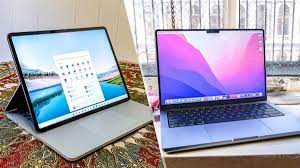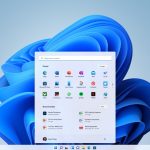MacBooks are powerful and chic. That’s also true of many Windows notebooks—and they have other advantages that MacBooks can’t counter.
MacBooks and Windows laptops used to have more in common than they do today: An Intel processor was at the heart of both mobile systems. Since November 2020, Apple has equipped its laptops with its own system-on-a-chip—the M1, which was followed by the M2 about a year ago.
This made the differences that have always existed between MacBooks and Windows notebooks even more obvious. But each platform has certain advantages and disadvantages that can be decisive for a purchase decision. Here the most important reasons why you should prefer a Windows laptop, while our friends at Macworld have a companion list of the reasons you might want a Mac.
Further reading: See our roundup of the best laptops for top picks at all price points.
1) Huge range of software for Windows laptops
You can really do everything with a Windows laptop: Because there is suitable software for every purpose—from productive programs for work, study, and school to creative applications in the multimedia field; from robust databases to smart mini tools with few functions.
Thanks to this large selection, you can choose among several alternatives within each software category. Take Office programs, for example: You can go for Microsoft 365, but also try Libre Office, Open Office, Softmaker Office, and other programs with similar functions. (We’ve got a roundup of the best free Office suites available.)
0 seconds of 15 secondsVolume 0%
The same applies to security tools and actually every other software area. Last but not least, most programs that are central to MacBooks, such as Adobe software for multimedia editing, are also available for Windows notebooks.
BEST BUDGET PC LAPTOP
Acer Aspire 3 (2022)

That’s why you’re not locked into one software source with a Windows notebook: Microsoft may like to direct you to its own store in Windows, but you can also download and install programs directly from software manufacturers that run smoothly on a Windows laptop. In addition, there is a huge range of free Windows programs based on open source or as freeware.
Gamers in particular should definitely go for a Windows notebook: Those who have higher demands than browser games will get a wide selection of current games from the most diverse categories there.
BEST MIDRANGE GAMING LAPTOP
ROG Zephyrus G14 (2022)
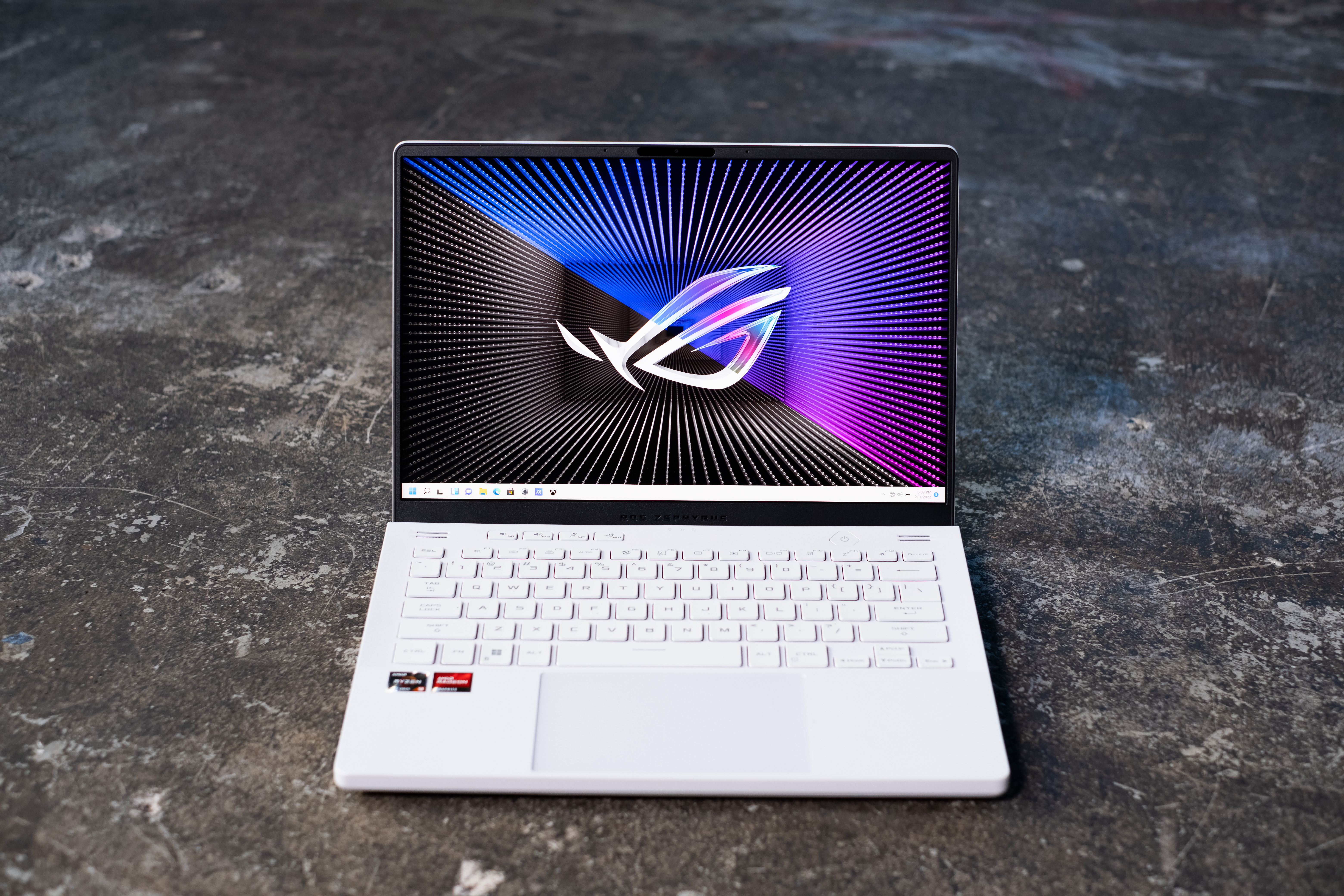
2) Large selection of different models
Apple’s MacBooks cover the most important display sizes from 13 to 16 inches and performance classes: But there is always only one model series for one area of use. With Windows laptops, on the other hand, you can choose from a wide range of suppliers and notebooks—whether you’re looking for an ultra-mobile lightweight for travelling or need a large screen and high performance for photo and video editing.
So find the device that perfectly suits your needs without having to compromise.
Because of this wide range, there are also Windows notebooks for which no MacBook alternative exists—because they are lighter, smaller or larger, for example: The Microsoft Surface Pro 8, for example, weighs less than 2 pounds, and the Dell XPS 13 and the Lenovo Thinkpad X1 Carbon each weigh less than 2.75 pounds. This means they undercut the MacBook Air in terms of weight.
Size is not a problem either: If you need a lush screen, go for a Windows notebook with a 17- or 18-inch display. Especially creative workers who work intensively with photos and videos will find optimal models with class-leading display technology, such as the MSI Titan GT77 HX 13V with a Mini-LED screen, or the spacious 4K Dell XPS 17.
BEST ULTRAPORTABLE
Dell XPS 13 Plus 9320
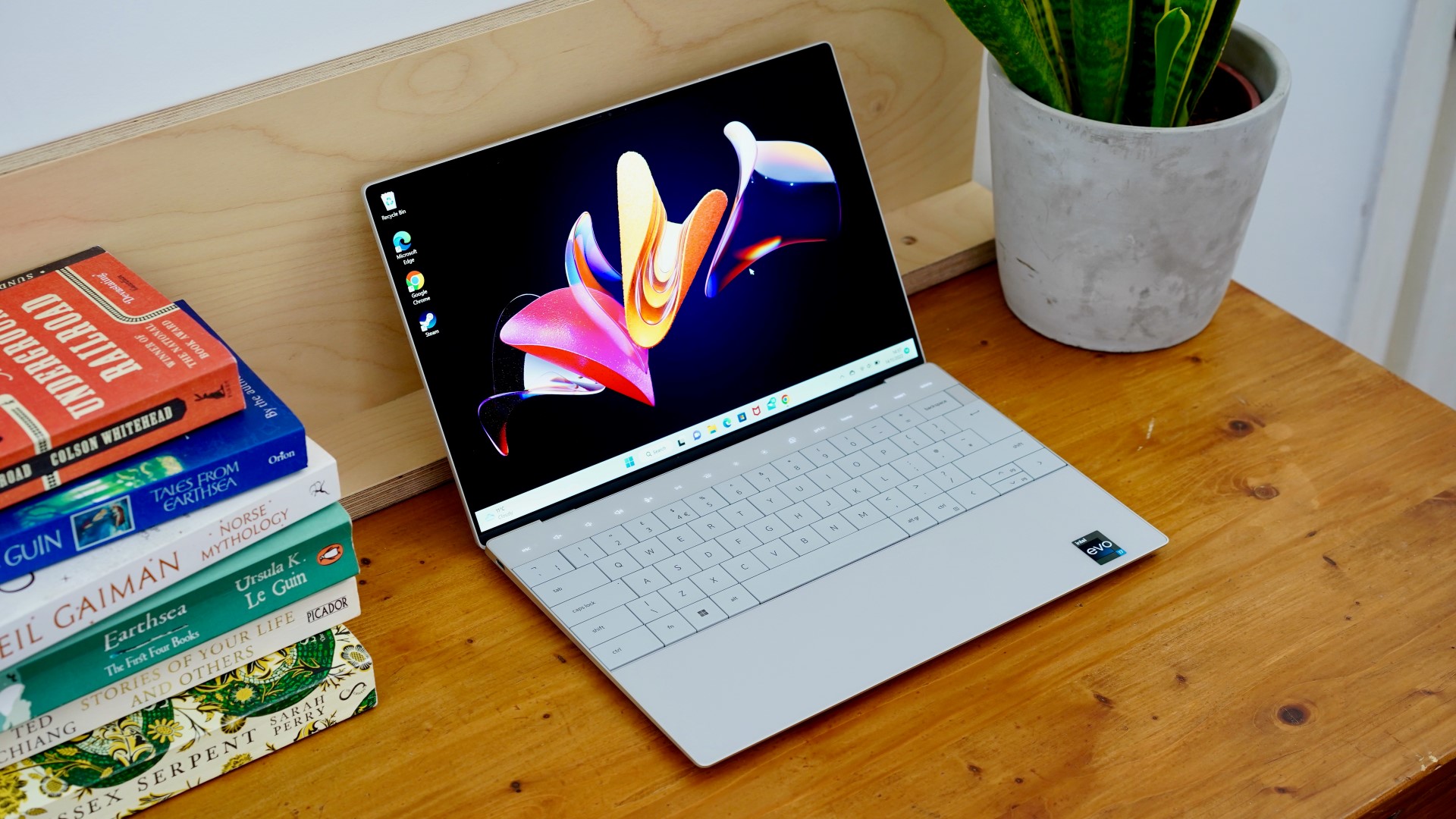
Apple undisputedly sets design trends with the MacBooks that other manufacturers follow, but Windows PCs can also go the extra mile in their designs. Take, for example, the Asus Zenbook Pro 14 Duo, which combines two touchscreens in one case. Indeed, there are no Apple notebooks with even a single touch-enabled display, to say nothing of convertible and 2-in-1 form factors, such as the Lenovo Yoga 9i. If you want to operate an Apple mobile device with your finger, you have to reach for the iPhone or iPad.
With Windows laptops there is a large selection of devices with touchscreens that you can control flexibly with a tap of your finger on the display as well as via the touchpad and keyboard.
Most touchscreen laptops are convertibles: With them, the screen can be folded onto the keyboard via a 360-degree hinge, so that you hold a tablet in your hands, which you then operate as usual via the touchscreen. These devices also support pen input for writing, drawing, and painting: So you get the functions of a notebook and tablet in one device.
BEST TOUCHSCREEN LAPTOP
Lenovo ThinkPad X1 Carbon Gen 9
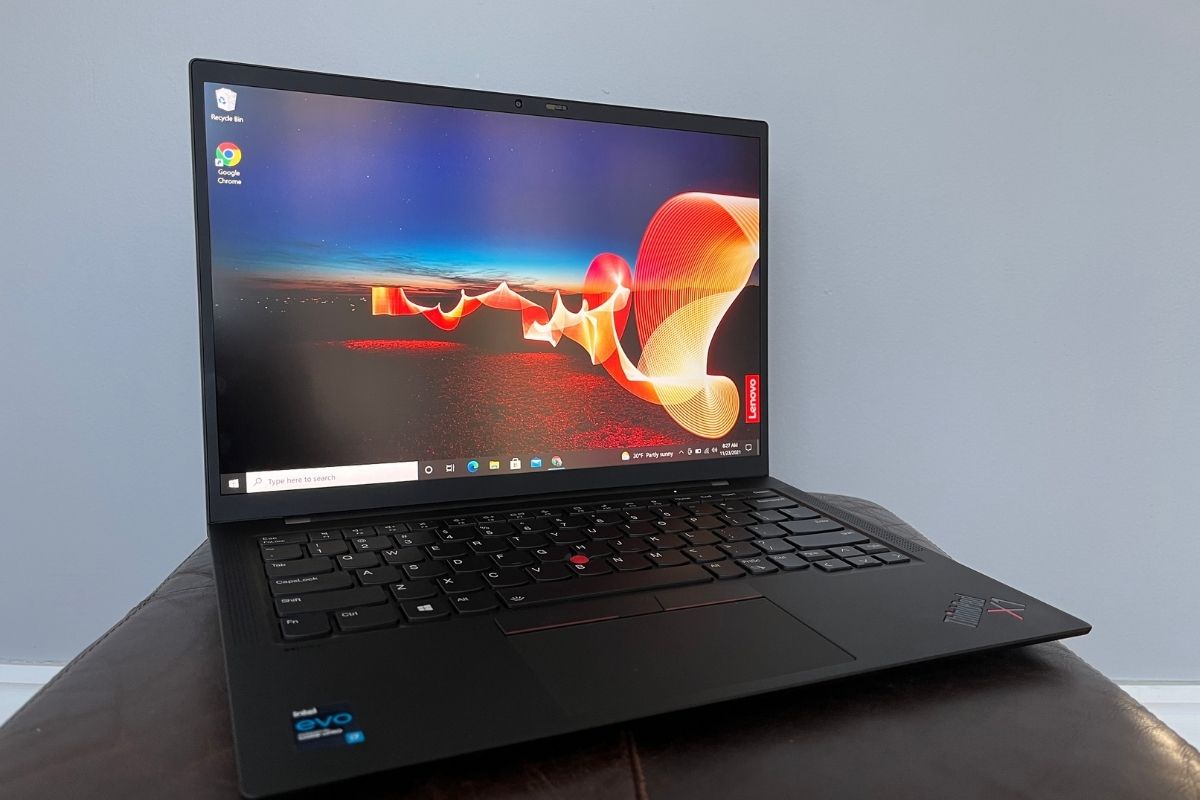
And, of course, Apple completely ignores one huge target group: gamers. They absolutely need a Windows laptop: Only here can you get a powerful GPU—usually from Nvidia—that can display current games in complete graphic splendor. Here, too, they benefit from a huge range of models with different features and in different price ranges. (See our roundup of the best gaming laptops to learn more.)
3) Windows notebooks are cheaper
The large selection of Windows notebooks has another advantage: You are guaranteed to find a Windows laptop that is significantly cheaper than a MacBook or offers better features at a similar price.
The currently cheapest MacBook Air—as of August 2023—is currently available starting at $999 (and features the last-gen M1 CPU). But you can easily find a Windows notebook, such as the Acer Aspire Vero 14, for $100 less that features more CPU cores, more memory, and a bigger SSD.
Even creative professionals who have to spend a lot of money for top performance can save at least a little with a Windows notebook.
BEST MACBOOK ALTERNATIVE
HP Dragonfly Pro

4) Windows notebooks are easier to upgrade and repair
Windows notebooks are not only cheaper to buy, but also in the long term: Most models are easy to upgrade and repair. For example, you can easily install a larger SSD if you run out of storage space, upgrade to additional, faster RAM if performance drops, or replace the Wi-Fi module if the wireless connection fails.
This allows you to use your Windows notebook longer and you don’t necessarily have to buy a new device.
With almost all Windows notebooks, the SSD can be exchanged and replaced with a larger one, as current laptops use the standardized M.2 slot for this purpose. Larger laptops in particular offer a second M.2 slot for an additional SSD. With many models it is just as easy to change the RAM by removing the SO-DIMM bars and inserting new ones.
Only in flat ultrabooks is the LPDDR RAM often soldered directly onto the board. The Wi-Fi module is also often replaceable because, like the SSD, it sits in an M.2 slot.
In current Macbooks, however, the RAM and SSD are soldered to the circuit board and cannot be exchanged and replaced by the user with larger and faster memory. Replacing the battery is also complicated. No wonder repair experts like ifixit.com criticize MacBooks for this.
Tuning enthusiasts also have an easier time with a Windows notebook: gaming notebooks in particular are equipped with additional tools and UEFI functions for overclocking, which can be used to get more performance out of them.
BEST 16-INCH GAMING LAPTOP
Asus ROG Zephyrus M16

5) With a Windows notebook you need fewer adapters—or none at all
Admittedly, this advantage of Windows laptops over MacBooks is narrow: Both now rely mainly on the flexible Type-C port with Thunderbolt to connect peripherals.
To connect multiple devices via one cable, such as USB storage and monitors, you definitely need a suitable docking station. Many flat ultrabooks, like the MacBook Air, have no ports other than an audio jack in addition to Type-C. On larger and more powerful notebooks, you will also find HDMI and a card reader—this applies to Windows models as well as the MacBook Pro.
However, most Windows notebooks still offer at least one USB type A socket: This is surprisingly helpful in everyday life because you can quickly connect a stick or an external hard drive without having to look for an adapter.
Gaming notebooks also almost always have an Ethernet port with Gigabit or 2.5Gbit speed—the best option for a fast and stable network connection. Business users looking for a notebook with a built-in LTE or 5G module or companies that want to secure device access via smart card also need a Windows notebook.


